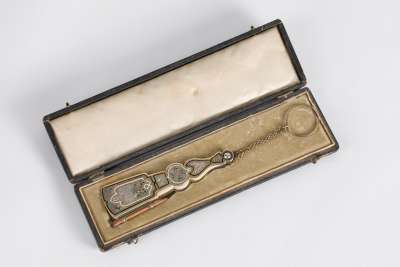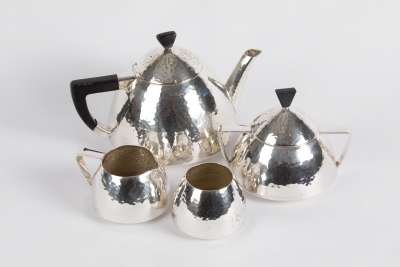A sterling silver lady's dance purse with ivory note leaf and pencil. Hallmarked Birmingham 1904, makers marks for Charles S Green & Co Ltd.
Condition: Wear consistent with age and use.
Dimensions: Weight 116gm, Length 8cm with chain 16.5cm Width 10cm.
NB For sale in Australia only.














